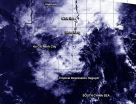(Press-News.org) December 12, 2014 - All children should undergo vision health screening between age 36 and 72 months--preferably every year--using evidence-based test methods and with effective referral and follow-up, according to recommendations published in the January issue of Optometry and Vision Science, official journal of the American Academy of Optometry. The journal is published by Lippincott Williams & Wilkins, a part of Wolters Kluwer Health.
The National Expert Panel to The National Center for Children's Vision Health makes recommendations for vision health screening in preschool-aged children, including specific guidance for screening tests and the screening process. The recommendations are available as open access articles on the journal website: http://optvissci.com/.
Vision Health Screening in Preschoolers: Recommendations and Best Practices
Preschool-aged children need screening for early detection of vision problems, particularly refractive error (vision problems requiring glasses), amblyopia ("lazy eye"), and strabismus (a disorder of eye alignment). Prompt diagnosis and referral to an eye care professional (optometrist or ophthalmologist) has major implications for school readiness and child development.
The recommendations are intended to guide the development of vision health screening programs in school and community settings, performed by appropriately trained lay screeners or nurses. The National Expert Panel was made up of leading professionals in optometry, ophthalmology, pediatrics, public health, and related fields.
The Panel recommends vision health screening or comprehensive eye exams for all children, between age 36 months and before age 72 months. Annual screening is defined as "best practice"; screening at least once after age three years is an "accepted minimum standard."
Certain children--including those with recognized eye or vision abnormalities, developmental disorders, and other high-risk groups--need immediate referral to an eye care professional, rather than screening. The Panel also outlines recommendations for rescreening or referral in young children who are unable or refuse to complete screening.
Recommendations for Tests, Training, and Procedures
The guidelines specify acceptable screening methods, along with definitions of pass/fail screening results. The Panel identifies two "best practice" screening tests: visual acuity testing with eye charts and instrument-based testing using equipment called an autorefractor. The acuity test recommendations call for testing of one eye at a time, using specific types of vision charts and test distances. Specific models of autorefractors with adequate supporting evidence are identified.
The guidelines also address the training and certification of screeners, requirements for space, equipment and supplies, and recording and reporting of the results to the family, health care providers, school, and state agencies.
The January issue also presents an additional National Expert Panel report with recommended measures and definitions for determining vision health screening rates and appropriate follow-up for preschool-aged children. Another report proposes the establishment of integrated health information systems to help ensure quality eye care for children at the local, state, and national levels.
After publication, the recommendations will be periodically updated and posted on the on the website of The National Center for Children's Vision Health: http://nationalcenter.preventblindness.org/. The website also offers supporting materials and demonstrations of the vision health screening process for communities and organizations seeking to establish screening programs.
"Unfortunately, many children receive neither appropriate screening to help identify those who need immediate eye attention, nor a comprehensive examination by an eye care professional prior to beginning school," comments Anthony Adams, OD, PhD, Editor-in-Chief of Optometry and Vision Science. "These National Expert Panel reports are an important starting point for identifying vision health screening procedures and tests and definitions of expected performance measures to be tracked across the country. They also advocate the establishment of integrated health information systems, with the goal of ensuring that children with problems identified on screening tests receive appropriate, comprehensive eye examinations and follow-up care."
INFORMATION:
MADISON, Wis. - As a fundamental unit of life, the cell is central to all of biology. Better understanding how complex cells evolved and work promises new revelations in areas as diverse as cancer research and developing new crop plants.
But deep thinking on how the eukaryotic cell came to be is astonishingly scant. Now, however, a bold new idea of how the eukaryotic cell and, by extension, all complex life came to be is giving scientists an opportunity to re-examine some of biology's key dogma.
All complex life -- including plants, animals and fungi -- is made up of ...
The genomes of modern birds tell a story: Today's winged rulers of the skies emerged and evolved after the mass extinction that wiped out dinosaurs and almost everything else 66 million years ago.
That story is now coming to light, thanks to an international collaboration that has been underway for four years.
The first findings of the Avian Phylogenomics Consortium are being reported nearly simultaneously in 23 papers--eight papers in a special issue this week of Science, and 15 more in Genome Biology, GigaScience and other journals.
The results are funded in part ...
An ancient meteorite and high-energy X-rays have helped scientists conclude a half century of effort to find, identify and characterize a mineral that makes up 38 percent of the Earth.
And in doing so, a team of scientists led by Oliver Tschauner, a mineralogist at the University of Las Vegas, clarified the definition of the Earth's most abundant mineral - a high-density form of magnesium iron silicate, now called Bridgmanite - and defined estimated constraint ranges for its formation. Their research was performed at the Advanced Photon Source, a U.S. Department of Energy ...
Chicago, IL, and New Haven, CT, December 12, 2014 - The Yale School of Forestry & Environmental Studies and The Associated Press-NORC Center for Public Affairs Research today released the first set of findings from its inaugural environment poll. The poll surveys a nationally representative sample of American adults and provides a portrait of what the public thinks and feels about environmental issues, and what actions they are taking as consumers.
Findings from the first report indicate that most Americans say the United States ought to take a leadership role in combating ...
VIDEO:
A wide-field movie by GOES-WEST of the North Pacific from Dec. 9-12, 2014 reveals the violent rain storms pouring moisture on the "Pineapple Express " jet stream into California in mid-December....
Click here for more information.
The ''Pineapple Express'' happens when warm air and lots of moisture are transported from the Central Pacific, near Hawaii, to the Eastern Pacific Ocean. An animation of satellite imagery from NOAA's GOES-West satellite showed the stream of ...
Tropical Cyclone Bakung is moving in a westerly direction over the open waters of the Southern Indian Ocean and NASA's Aqua satellite captured an image of the sea storm.
Aqua passed over Bakung on Dec. 12 at 07:35 UTC (2:35 a.m. EST) and the MODIS instrument aboard took a visible image of the storm. The image showed that deeper convection (stronger currents of rising air that form the thunderstorms that make up the tropical cyclone) was occurring around the low-level center of circulation, so the center was not apparent in the MODIS imagery. The bulk of the clouds associated ...
Splashy blue and green hues pop from under the glassy finish of the Tinamou species' (bird relatives of ostriches, rheas and emus) eggs. Pigments covered by a thin, smooth cuticle reveal the mystery behind these curious shells, University of Akron researchers discovered. The finding could lead to the development of glossy new coatings for
ceramics and floors, potentially enhancing their aesthetic qualities and durability.
After removing the outer layer of the eggshells and examining their chemistry and nanostructure, the researchers discovered the presence of a weak ...
Extreme climate and weather events such as record high temperatures, intense downpours and severe storm surges are becoming more common in many parts of the world. But because high-quality weather records go back only about 100 years, most scientists have been reluctant to say if global warming affected particular extreme events.
On Wednesday, Dec. 17, at the American Geophysical Union's Fall Meeting in San Francisco, Noah Diffenbaugh, an associate professor of environmental Earth system science at the Stanford School of Earth Sciences, will discuss approaches to this ...
PHILADELPHIA -- Frequent kidney dialysis is essential for the approximately 350,000 end-stage renal disease (ESRD) patients in the United States. But it can also cause systemic inflammation, leading to complications such as cardiovascular disease and anemia, and patients who rely on the therapy have a five-year survival rate of only 35 percent. Such inflammation can be triggered when the complement cascade, part of the body's innate immune system, is inadvertently activated by modern polymer-based dialysis blood filters. New work by Penn researchers has found an effective ...
Like a smart sensor that adjusts the lighting in each room and a home's overall temperature, a protein that governs the making of other proteins in the cell also appears capable of controlling fat levels in the body.
The finding, which appeared in Cell Reports on Dec. 11, applies to the Maf1 protein in worms.
A version of the protein, which exists in humans, also regulates protein production in the cell, raising the possibility that it too may control fat storage. A protein with such a function would offer a new target for pharmaceuticals to regulate fat, said Sean ...




